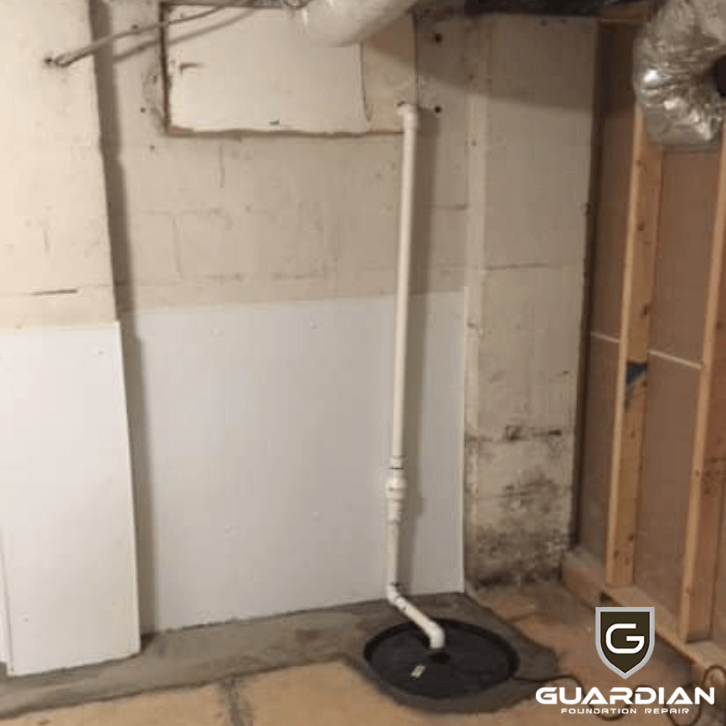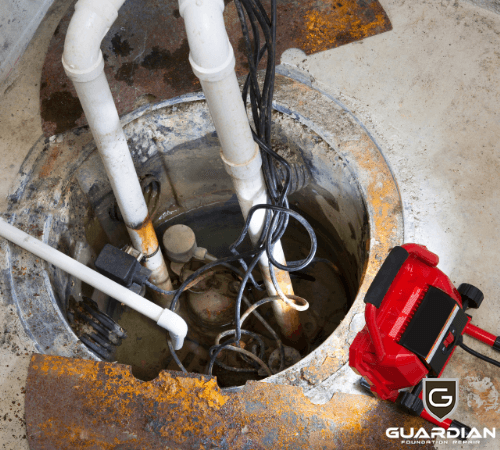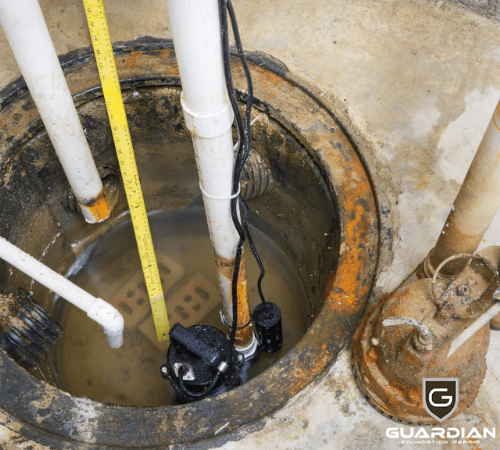Introduction
During a heavy downpour in Knoxville, a failed sump pump is the last thing you want to deal with. It is most significantly the last line of defense against water damage, flooded basement, and costly home repairs.
But, how do you know when it is time to replace your sump pump?
Because a sump pump only runs when needed, it’s not always easy to tell when it’s time for a new one. However, if you vigilantly monitor a few key factors, you can stay ahead of any potential problems. And avoid waking up to a flooded basement or investing in costly crawl space repair.
How Long Has It Been Since You Last Replaced Your Sump Pump?
Sump pumps usually last for around ten years, but this can vary depending on the make and model. If you’re not sure how long ago your pump was installed, check the manufacturer’s warranty or contact the company for more information. If it’s been more than ten years since your pump was replaced, it’s probably time for a new one as repairing a sump pump as old as that can be more costly and complex than replacing it.
The life of your sump pump is generally influenced by:
- Frequency of use
- Water conditions it encounters
- Runtime of its cycle
- Volume of water pumped
To extend the life of your sump pump, you can take some preventive measures like cleaning the debris from the pit and pump regularly. It is also recommended to call a plumber to check and service your sump pump every two years to ensure it’s running correctly.
Most sump pumps come with a warranty of at least 1 to 3 years. If your pump stops working and is within the warranty period, the manufacturer will usually replace it for free. However, if you are close to the warranty period and your sump pump is working just fine, you may still want to consider replacing it before it expires. After all, it is far cheaper to replace a sump pump than to pay for foundation repair or water damage restoration.
Learn more about why basement waterproofing in winter is a good idea.
Signs to Replace Your Sump Pump
Sump pumps are known to fail at the worst possible time, like when a significant storm is rolling in. The best way to avoid dealing with water damage is to be proactive and monitor the health of your sump pump. If you notice any of the following signs, it may be time to replace your pump:
Running Constantly
If your sump pump keeps running regardless of water levels, there is something seriously wrong with it. When the sump pump continues to run even after all the water is emptied from the basin, this puts extra strain on the pump’s motor. In addition, the water helps cool down the pump, so if the water is not present, the pump will overheat to the point of failure.
This is a fairly common problem, and many factors can lead to it. One of the most common is the wrong size of the sump pump. When a sump pump is too small for the job, it will have to run constantly to keep up with the basin’s water flow, causing it to overheat and fail. And when the pump is too large for the job, it will cycle on and off too frequently, which will also lead to early failure.
Being Noisy:
Your sump pump shouldn’t be making more than a low humming noise; anything louder could signify something wrong. However, there are a few reasons why your pump may be making more noise than usual: a worn-out motor.
If the bearings in the motor are going bad, it will cause extra friction and make more noise. Another common problem that can cause a pump to be louder is if the impeller is clogged with debris. This will prevent the impeller from spinning correctly and increase the noise level.
If your pump is making more noise than usual, it’s good to have it checked by a crawl space repair professional to determine the root of the problem.
Leaking:
If you notice water leaking from your sump pump, it could signify that the seals are worn out and need to be replaced. This is a common problem with older pumps and is generally caused by the seals wearing out over time.
If the seals are not replaced, it will eventually cause the pump to fail. Another sign of leaking is if water is coming out from around the pump’s base. This could be because the seal is not tight and allows water to seep in.
If you are experiencing any of these problems, it’s best to replace your sump pump before it fails. However, waiting too long could result in expensive water damage repairs.
Old age:
Like any other machine, sump pumps eventually wear out and need to be replaced. But many homeowners put off replacing their pump until it completely fails, which can lead to costly repairs. At times, the pump works well without any issues, so you tend to forget how long it has been running. But regardless of how well it is running, it is not worth risking the chance of a catastrophic failure.
If your pump is getting close to or beyond its 10-year life expectancy, it’s good to start shopping for a new one. As the decade of wear and tear takes its toll, it reduces the pump’s efficiency, making the parts more likely to break.
Moreover, when you invest in new sump pumps that come with screened top inlets that prevent debris from clogging the pump and save you a lot of time on maintenance.
If you’re unsure whether or not it’s time to replace your pump, contact a professional to inspect it for you. They will be able to tell you if it’s still in good condition or if it’s time for a replacement.
Cycling on and off:
If you notice your pump is cycling on and off constantly or taking too long to pump out the water, it’s a sign that there is something wrong. A pump with continual cycling is usually a result of a failed check valve.
The check valve is responsible for keeping the water from flowing back into the sump pump basin, so if it fails, the pump will have to work extra hard to keep up. Unfortunately, this will cause the pump to overheat and eventually die.
Another common problem that can cause a pump to cycle on and off is if the float switch is not working correctly. The float switch is set to actuate when the water level in the basin reaches a certain point. If the button is not working correctly, it will cause the pump to turn on and off constantly.
Clogged:
An uncovered sump pump pit is susceptible to clogging by leaves, dirt, and other debris. This can prevent the pump from working properly and increase the noise level. In addition, when the pump is clogged with waste, it will struggle to remove water from the basin. Debris can also jam the float switch, leaving it stuck in the “on” position, which will cause the motor to exhaust.
The best way to protect your pump from debris is to cover the pit with a screen or grate. This will keep the majority of the junk out and help keep your pump running smoothly.
Learn more about installing a French drain in your house.
Conclusion:
Standing water in your basement due to a broken pump can be a hassle. Not only is it a health and safety hazard, but it can also lead to costly house foundation repairs.
So ready to get your sump pump replaced? Guardian Foundation Repair in Knoxville, Tennessee is here to help. Our professional sump pump installation service will have your basement up and watertight in no time. So give us a call today!



